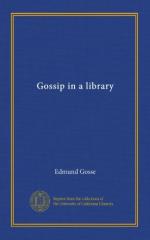When this first English edition of the Britannia was published, Camden was one of the most famous of living English writers. For one man of position who had heard of Shakespeare, there would be twenty, at least, who were quite familiar with the claims of the Head-master of Westminster and Clarenceux King-of-Arms. Camden was in his sixtieth year, in 1610; he had enjoyed slow success, violent detraction, and final triumph. His health was poor, but he continued to write history, eager, as he says, to show that “though I have been a studious admirer of venerable antiquity, yet have I not been altogether an incurious spectator of modern occurrences.” He stood easily first among the historians of his time; he was respected and adored by the Court and by the Universities, and that his fame might be completed by the chrism of detraction, his popularity was assured from year to year by the dropping fire of obloquy which the Papists scattered from their secret presses. It had not been without a struggle that Camden had attained this pinnacle; and the Britannia had been his alpenstock.
This first English edition has the special interest of representing Camden’s last thoughts. It is nominally a translation of the sixth Latin edition, but it has a good deal of additional matter supplied to Philemon Holland by the author, whereas later English issues containing fresh material are believed to be so far spurious. The Britannia grew with the life of Camden. He tells us that it was when he was a young man of six-and-twenty, lately started on his professional career as second master in Westminster School, that the famous Dutch geographer, Abraham Ortelius, “dealt earnestly with me that I would illustrate this isle of Britain.” This was no light task to undertake in 1577. The authorities were few, and these in the highest degree occasional or fragmentary. It was not a question of compiling a collection of topographical antiquities. The whole process had to be gone through “from the egg.”




